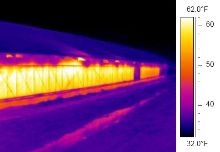Simple steps can reduce energy costs for broiler growers

Because energy expenses comprise the single largest item of a broiler grower’s variable costs, reducing energy usage is an important means of improving net returns. A recent bulletin from the University of Georgia Cooperative Extension identifies a number of straightforward measures that growers can implement to help bring down utility expenses, according to the Poultry Science Association (PSA).
According to the bulletin, heating fuel and electricity costs account for almost 60% of a typical contract broiler grower’s variable production costs. Dr. Brian Fairchild, a University of Georgia Extension poultry scientist and one of the authors of the bulletin, notes that rising energy costs over the last decade have contributed to the need for growers to find more energy efficient means of heating and cooling their poultry houses.
“Contract growers recently have seen a considerable increase in the prices they pay for fuel and electricity. So there’s been a big push in the last six or seven years to conserve energy in broiler live production. The trick, however, is to do so without turning down the thermostat in the broiler house. Fortunately, almost everything we’ve done to reduce energy costs has also helped to actually improve the environment for the birds,” said Dr. Fairchild.
In recent years there has been a trend toward solid wall construction for newer broiler houses. While there is little difference, according to the bulletin, in electrical cost data between solid- and curtain-wall houses, there is a significant difference in the usage of heating fuel, with solid-wall houses consuming considerably less propane. In a study conducted by the authors, solid-wall houses used 0.0265 gal/ft2 per flock versus 0.0361 gal/ft2 per flock for curtain houses. This translates into an annual average savings for a solid-wall house of more than $2,100 per 20,000 ft2 of housing space.
While the ranges of electrical cost data between the two housing types are similar, there is, within each type, a wide range of annual electrical costs. For example, in curtain-sided houses, annual electrical costs ranged from $1,620 to $5,148/ 20,000ft2. Solid-wall houses showed a similar range. Even with other possible factors taken into account for variability in electrical usage, it was clear, say the authors, that “regardless of house type and growing conditions, [for] growers with electrical usages toward the high end of the range…it is highly likely [they] can improve their bottom line profitability by improving their ventilation methods.”
“By consistently practicing good energy management, broiler growers have the potential to significantly improve their energy usage and pare back utility costs,” said Dr. Fairchild.
Related website
Poultry Science Association (PSA)













